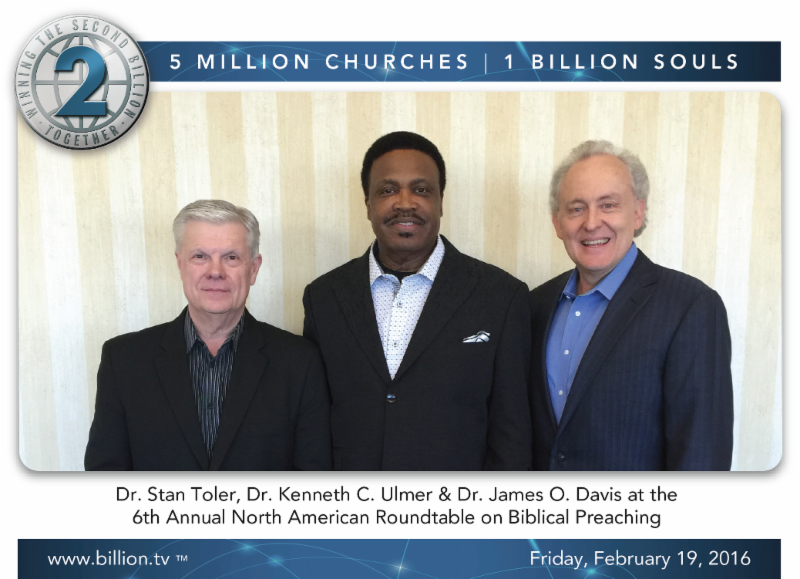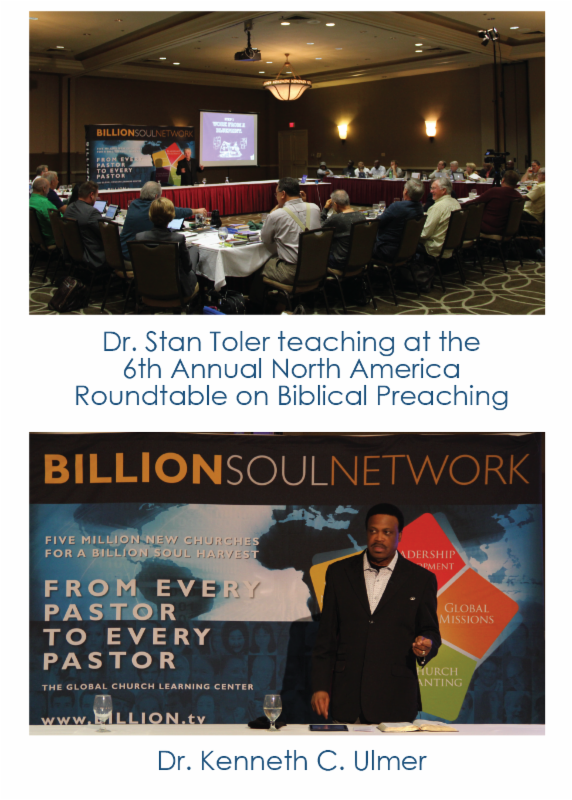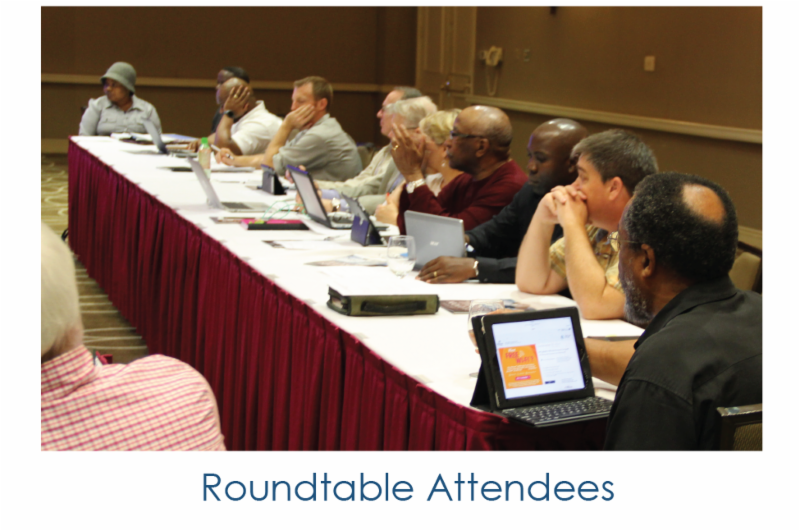The Five Laws Of Communication For Preachers. Read It Today!


Dear Visionary Leader,
We have just completed our 6th Annual North American Roundtable On Biblical Preaching. Some pastors have said, “this is the best one yet!” We were privileged to have Dr. Kenneth C. Ulmer, Senior Pastor of Faithful Central Bible Church, Los Angeles California; and Dr. Stan Toler, Founder of the Stan Toler Leadership International and General Superintendent, Emeritus of the Church of the Nazarene, in Oklahoma City, Oklahoma. Both of these outstanding Christ-centered communicators brought powerful presentations and taught outstanding principles on communication and preaching for our time.
Preaching and teaching will determine the growth and maturity of our ministry in general and our local church in particular. We cannot expect our people to go beyond where we have personally gone in our lives. At our most recent North American Roundtable On Biblical Preaching, pastors and leaders came from Africa, Caribbean, Canada and the United States. Be sure to make plans to attend next year’s round table!




 I believe that there are persuasive laws of communication for the preacher and teacher of today. At our most recent North American Roundtable On Biblical Preaching I taught five of these pertinent laws. They are the first five laws in the book Gutenberg to Google: The 20 Indispensable Laws of Communication.
I believe that there are persuasive laws of communication for the preacher and teacher of today. At our most recent North American Roundtable On Biblical Preaching I taught five of these pertinent laws. They are the first five laws in the book Gutenberg to Google: The 20 Indispensable Laws of Communication.
Fill The Pulpit And Expect God To Fill The Building
I learned this lesson many decades ago. I am to be ready every time I’m called upon to preach the message and expect God to fill the building. There a lot of things I can be and there a lot of things I can do. Yet, I must be ready when it’s time to deliver God’s Word.
The Mind Craves Order Not Chaos
Regardless of where our listeners live on the planet, God has given everyone a mind by which to think and to reason. We are to have some sort of structure and development to our presentations. They do not have to have pointed outlines but there is a beginning, a middle and an end to the sermon. It is easy to throw nothing together, but it takes time to build some sort of order into our message.

Creativity Is Like Giving Birth To Barbwire, But Someone Has To Do It
The essence of creativity is our ability to accommodate as many new thought as possible. Our thoughts are vehicles, taking us through life. In order to have a successful journey we have to take control of our thoughts. We have to decide where we are going and who we want to become. I recommend that you create for the audience, cluster for the audience and compose for the audience.
 The Person’s Mind Is Not A Debating Hall But A Picture Gallery
The Person’s Mind Is Not A Debating Hall But A Picture Gallery
People do not come to hear reasons but to see visions. It is our responsibility to find the appropriate pictures and images in order to communicate the message that God has laid upon our heart to speak to our congregation.
How do the majority of people learn? They learn by perceiving (right brain) and processing information (left brain). Word pictures connect both halves of the brain.
The Length Of A Message Is Not Determined By The Clock But By The Crowd
When the crowd says the sermon is over, it is over! The goal as a biblical communicator is to bring the people along with us from the beginning to the end of the message. We are to have a sense of our audience and to know where they are as we articulate our teachings to them.
Make your presentations SHARP:
Stories
Humor
Analogies
References & Quotes
Pictures & Visual Aids
As we move into 2016, let’s pray for the Holy Spirit to transform our manuscripts into messages! Please make plans to join us for next year’s North American Roundtable On Biblical Preaching scheduled for January 24-26, 2017, in Melbourne, Florida.
Until The Last Person Has Heard,

Dr. James O. Davis
Cofounder / Billion Soul Network
Cochair / Global Networking



























